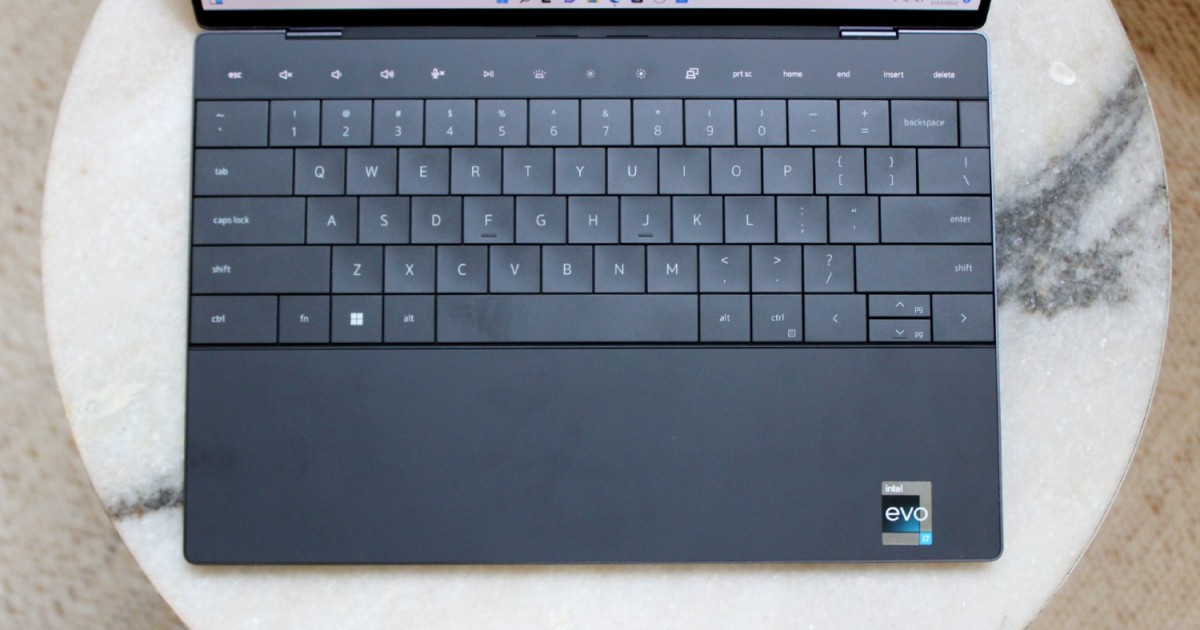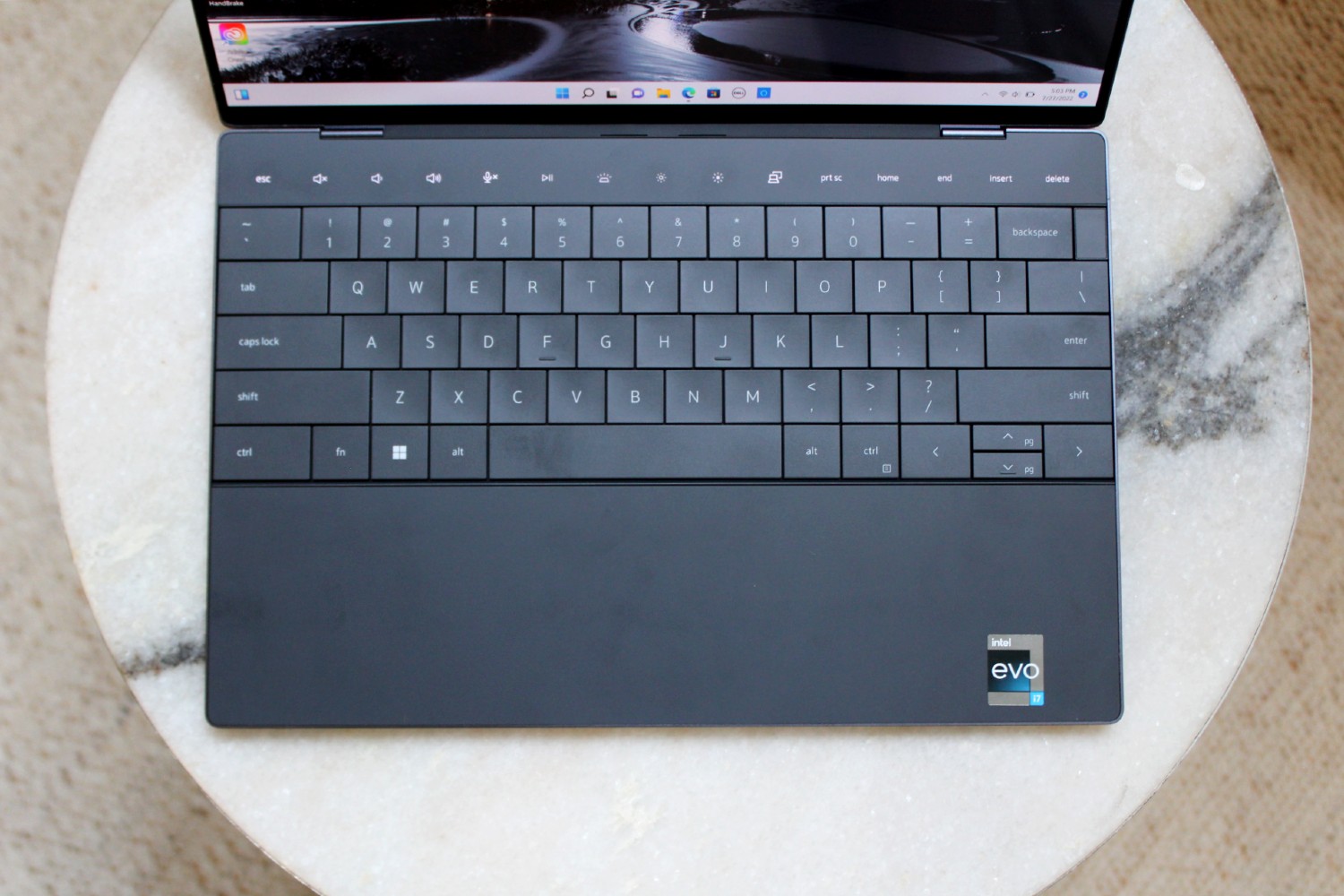
Dell XPS 13 Plus
MSRP $1,399.00
“The Dell XPS 13 Plus is the fresh take on laptop design I’ve been waiting for.”
Pros
- Irresistibly fresh design
- Great OLED screen
- Helpful performance modes
- Excellent haptic touchpad
- Webcam has been improved
Cons
- Gets warm on the bottom
- No headphone jack
- Battery life less than average
Note: This review covers both the 2023 and 2022 versions of the XPS 13 Plus. Differences in between the two models are subtle but will be noted and referenced throughout.
The Dell XPS 13 Plus is the kind of laptop that will cause head turns and double-takes. Not because it’s gimmicky or unusual – but because it just looks that good. It’s certainly one of the most eye-catching laptops I’ve ever used.
But is it the best laptop you can buy? That’ll be a harder case for the XPS 13 Plus to make to some people, even when it dares to feel like a peek at the future of laptops.
Video review
Specs and configurations
| Dell XPS 15 (2023) | |
| Dimensions | 11.63 inches x 7.84 inches x 0.60 inches |
| Weight | 2.77 pounds |
| Processor | Intel Core i5-1340P Intel Core i7-1360P Intel Core i9-1370P |
| Graphics | Intel Iris Xe |
| RAM | 8GB LPDDR5-6000MHz 16GB LPDDR5-6000MHz 32GB LPDDR5-6000MHz |
| Display | 13.4-inch 16:10 FHD+ (1920 x 1200) IPS non-touch 13.4-inch 16:10 FHD+ (1920 x 1200) IPS touch 13.4-inch 16:10 3.5K (3456 x 2160) OLED touch 13.4-inch 16:10 UHD+ (3840 x 2400) IPS touch |
| Storage | 512GB PCIe SSD 1TB PCIe SSD 2TB PCIe SSD |
| Touch | Optional |
| Ports | 2 x USB-C with Thunderbolt 4 |
| Wireless | Wi-Fi 6 and Bluetooth 5.3 |
| Webcam | 720p with infrared camera for Windows 11 Hello |
| Operating system | Windows 11 |
| Battery | 55 watt-hours |
| Price | $1,399+ |
As of right now, Dell’s website lists the XPS 13 Plus with just the Core i7-1360P CPU. That gives a starting price of $1,399 with 16GB of RAM, a 512GB SSD, and the 13.4-inch FHD+ non-touch IPS display. Increase to 32GB of RAM and a 2TB SSD, and choose either the 3.5K OLED or UHD+ IPS panel, and you’ll spend $2,099. That makes the XPS 13 Plus a very premium 13-inch laptop.
The 2022 model, which comes with the Core i7-1260P, is not currently being sold by Dell. However, at the moment, you can find it being sold by Best Buy for as low as $1,100 with the same base specs of 16GB of RAM and 512GB of storage.
Design
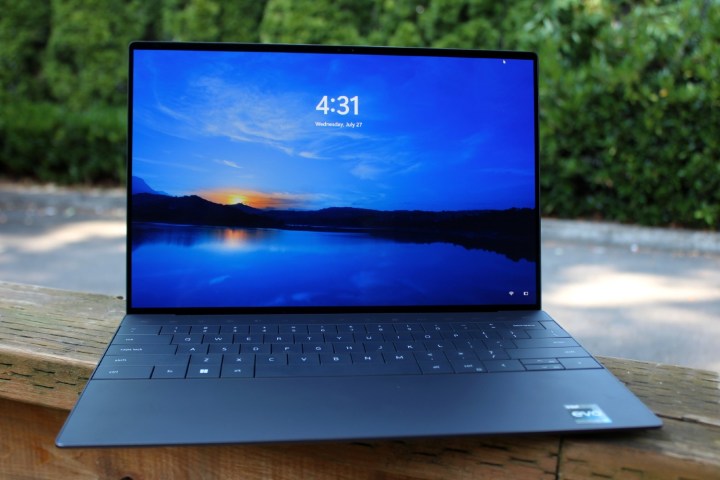
With one look, you can tell someone had a vision over at Dell for the XPS 13 Plus. That’s been true of the XPS line for years now, but you can see why Dell gave this design a new name. It’s well-deserving of one.
Gone is the carbon-fiber weave palm rests that became synonymous with the XPS brand, trading it in for a sleeker and more conventional aluminum surface throughout. There are two color options available this time: the darker “Granite” color and the lighter Platinum option, both of which have a unique tint. Outside the Dell logo on the back, though, there’s very little that resembles previous XPS laptops – at least not from the outside.
The device is 0.6 inches thick, which makes it slightly thicker than both the new XPS 13 at 0.55 inches (yet to launch) and last year’s XPS 13 at 0.58 inches. The M2 MacBook Air, of course, is quite a bit thinner at just 0.44 inches. It’s a similar case for weight, where the 2.71-pound Dell XPS 13 Plus is slightly heavier than other XPS models.
And yet, the XPS 13 Plus certainly feels portable in the hand. Chalk it up to the simplification of all the visual elements, but the XPS 13 Plus very much feels like a compact little machine.
The keyboard and touchpad have also undergone the most radical redesign. I’ll touch more on how they perform later, but the look alone is certainly striking. The touchpad now uses a haptic engine, which allowed Dell to make it invisible. The edges seamlessly blend into the palm rests, making for an incredibly minimalist vibe. The whole thing uses a single panel of Gorilla Glass 3 and feels extraordinary under your hands.
It’s a similar story with the keyboard. The “edge to edge” design means as few lines and partitions as possible. It also means extra large keycaps extend wide.
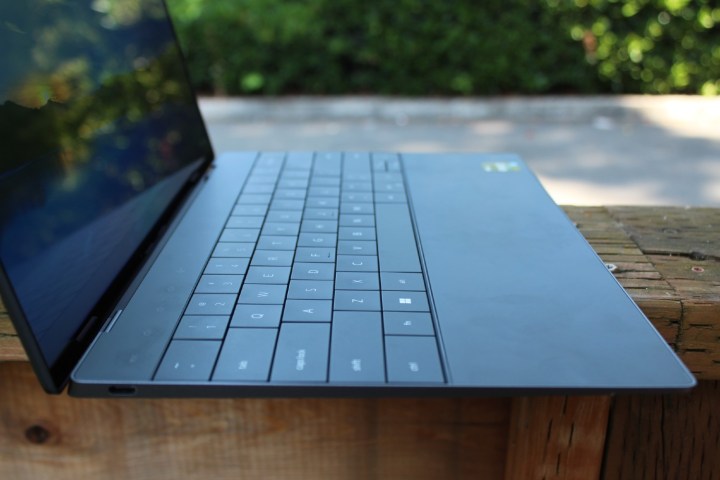
And finally, one of the most striking and controversial choices, the function row of keys has been replaced by capacitive touch buttons. Many of us have had poor experiences with these types of buttons in the past on tech products, but I tried to keep an open mind as I used the laptop as my daily driver. The touch buttons certainly have a futuristic look – and are a big part of what makes the device so unique.
The touch buttons have an engineering purpose, too. Removing the physical function row allowed Dell to use this extra space here to widen out the hinges, which the company says allows for better cooling. The brightness of these keys, meanwhile, is managed by the ambient light sensor on the lid by the webcam.
Keyboard and touchpad

When I first saw the XPS 13 Plus at CES, I was unconvinced about the typing and touchpad experience. Neat look, yes, but practical? I wasn’t sure. In particular, I had reservations about the haptic feedback touchpad, which felt decidedly “off” in my short time with it.
But no longer. After some tuning by Dell, the smooth tracking that I’ve come to love on haptic touchpads works great now. I turned down the sensitivity to 25%, as you can do in Windows 11, and found a sweet spot that perfectly simulated the kind of physical click mechanism that you get with a hardware touchpad. Gestures work great, too.
Typing on the XPS 13 Plus feels similar to past models. You get 1mm of travel, delivering clicky and satisfying keystrokes that feel both firm and comfortable. Of course, the wider key caps are excellent, making the layout feel spacious. I did find that for me, personally, the palm rests were a tad small for my larger hands. It’s not egregious, but I was occasionally annoyed by the sharp edges of the chassis digging into my palms.
As for the capacitive function row buttons, they also feel more responsive here in the final product. Despite my hesitation, they worked.
Ports
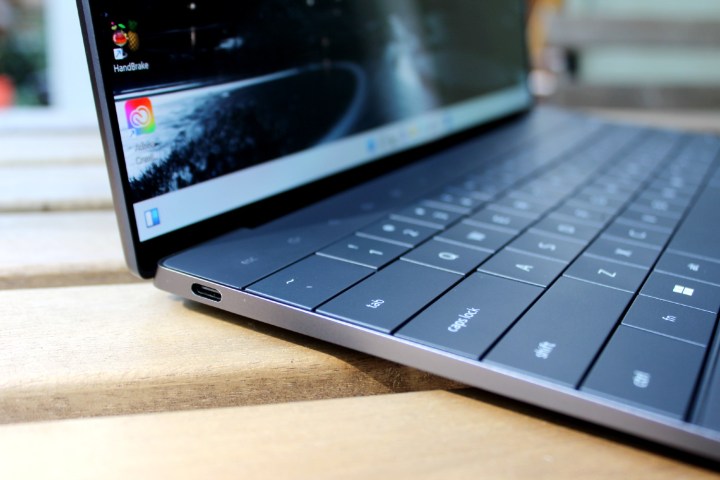
The Dell XPS 13 Plus includes just two USB-C Thunderbolt 4 ports, and that’s it. No headphone jack. No microSD card slot. No nothing.
You, like most people, probably have a visceral reaction to having things taken away from them, even if it’s to make for better tech in the long run. That’s the case with the headphone jack, and I certainly had some of the same feelings myself.
Dell isn’t the first laptop manufacturer to make this break, but it might be the most high-profile case. In a world where even Apple has kept the headphone jack in the MacBook Air, it feels like the XPS 13 Plus is venturing out into the unknown.
I didn’t find myself wishing I had a headphone jack as much as I thought I would.
And yet, I tried to keep an open mind. Over the course of my time using the XPS 13 Plus as my primary computer, I only came across one scenario when I found myself wanting to use a wired audio source. My wireless earbuds had died, and I wanted to listen to some music while working. Fortunately, Dell throws a USB-C to 3.5mm adapter right in the box, so after I dug it out, my concerns were put to rest.
It’s a clumsy solution, sure. But in a pinch, my minor problem was solved, and I went back to completely forgetting that this laptop didn’t have a beloved headphone jack.
Now, maybe if I was traveling a lot or working in unexpected tech environments, that could change. I certainly have sympathy for those who want to keep analog audio connections around for various reasons. That’s especially true since the device only comes with two USB-C ports.
As for wireless connectivity, the XPS 13 Plus comes with support for the latest Wi-Fi 6E and Bluetooth 5.2.
Webcam and speakers

Now that we all use them a lot more than we used to, though, a bad webcam is no longer a minor issue. And we all know that cameras have always been the Achilles heel of the XPS laptops.
Unfortunately, the Dell XPS 13 Plus still uses a 720p resolution camera, though this time, Dell has separated the actual camera from the IR sensor, which is used for Windows Hello. This has allowed for some improvements in image quality, especially in both low-light and high-exposure situations. To my surprise, it’s a far more usable webcam for video calls than previous XPS 13 models, even if it does lack the sharpness that you get in 1080p cameras.
It’s a similar case with the speakers. They’re better, just still not amazing. Dell now uses a four-speaker setup to give the audio a bit more oomph, and I could hear the difference immediately. Everything is clearer, and aside from the lack of bass, these speakers create a decent sound stage for the occasional movie trailer or YouTube video. So, it’s an improvement, but I’m not quite ready to call these “good” speakers.
Performance
The “Plus” in this laptop’s name is supposed to refer to improved performance. Leaning in on how Intel has divided up its new line of chips (with distinct U- and P-series chips), Dell is pointing to the XPS 13 Plus as the more powerful option, using a 28-watt chip instead of a 15-watt chip. The original model used the highest-end Intel 12th-gen option, the Core i7-1280P, which comes with 14 cores (6 Performance cores and 8 Efficiency cores) and a 4.8GHz max frequency. My review unit paired this CPU with 16GB of 5200MHz RAM.
For 2023, Dell went with Intel’s 13th-gen CPUs. The new model I reviewed equipped the 28-watt Core i7-1360P, not quite the highest-end processor in the lineup with just 12 cores (4 Performance cores and 8 Efficiency cores) with a 5.0GHz max frequency. The number of threads drops from 20 to 16. You can configure the new machine with the Core i7-1370P, which has 14 cores and 20 threads and runs up to 5.2GHz. RAM speed increased to 6000MHz.
But when it comes to the laptop itself, don’t get fooled by the marketing hype, occurring from both Dell and Intel, in this case. The XPS 13 Plus is plenty powerful, but it’s not any more of a performance-driven laptop than last year’s XPS 13. In fact, the upcoming XPS 13 is the one that has been downgraded to a lower-wattage CPU. There’s a larger story to tell there, but suffice it to say: The XPS 13 Plus isn’t dramatically more powerful than other laptops of its size.
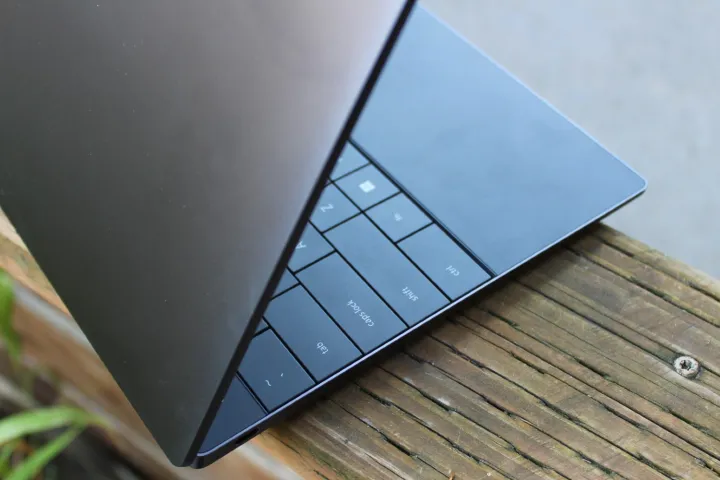
In the default Optimized mode, the XPS 13 Plus actually leans toward a cooler, quieter experience. Internal temperatures never got too hot, which has sometimes been an issue with other XPS laptops. But remember: With many laptops transitioning toward a larger, 14-inch screen size with a bit more room for cooling, the XPS 13 Plus (and standard XPS 13) isn’t the most powerful device to use this chip, as tested in just about every benchmark I threw at it.
The good news is the jump from 11th-gen to 12th-gen Intel chips was pretty significant in multi-core workloads, and the jump to the 13th-gen CPU is just as impactful in a couple of our benchmarks. So, you’ll likely be happy with the performance here, even with some fairly heavy multitasking, and even light content creation. Not exactly a machine you’ll want to spend all day editing 4K video on, but no laptop of this size really is. Note that the 2022 model didn’t keep up with its 28-watt 12th-gen competition, and in fact, the 2023 model with the 13th-gen CPU is slower in some cases. This just emphasizes that the XPS 13 Plus isn’t the speediest laptop around even though it’s fast enough for most users.
Rather than bump the screen size up to 14 inches and introduce some discrete graphics, the XPS 13 Plus is left as a capable laptop, but one that feels like it’s overselling its capabilities. Know what you’re getting into, though, and you’ll find plenty of performance for a laptop of this size.
Sidenote: I thought it was a really odd move when it was announced. At the time, I thought a 14-inch model would make more sense, especially since you could maybe put in a 45-watt CPU and a discrete graphics card, which is what a lot of laptop manufacturers have been doing recently. But after seeing what Apple has done by splitting its own lineup between the M1 MacBook Air and M2 MacBook Air, you can see that Dell was going after a very similar lineup. Even the prices almost line up identically.
| Geekbench (single/multi) |
Handbrake (seconds) |
Cinebench R23 (single/multi) |
PCMark 10 Complete |
|
| Dell XPS 13 Plus (Core i7-1360P) | Bal: 1652 / 7640 Perf: 1726 / 9098 |
Bal: 123 Perf: 100 |
Bal: 1512 / 7417 Perf: 1705 / 9895 |
5305 |
| Dell XPS 13 Plus (Core i7-1280P) | Bal: 1387 / 8667 Perf: 1651 / 10038 |
Bal: 170 Perf: 127 |
Bal: 1311 / 6308 Perf: 1650 / 7530 |
5470 |
| HP Spectre x360 13.5 (Core i7-1255U) | Bal: 1566 / 7314 Perf: 1593 / 7921 |
Bal: 169 Perf: 120 |
Bal: 1623 / 5823 Perf: 1691 / 7832 |
4895 |
| MSI Prestige 14 (Core i7-1260P) |
Bal: 1843 / 8814 Perf: 1835 / 10008 |
Bal: 114 Perf: 97 |
Bal: 1553 / 8734 Perf: 1567 / 10450 |
6201 |
| Lenovo Yoga 9i Gen 8 (Core i7-1360P) |
Bal: 1650 / 8080 Perf: 1621 / 8544 |
Bal: 122 Perf: 101 |
Bal: 1846 / 8779 Perf: 1906 / 9849 |
5537 |
| HP Pavilion Plus 14 (Core i7-12700H) |
Bal: 1462 / 8531 Perf: 1472 / 8531 |
Bal: 104 Perf: 102 |
Bal: 1523 / 8358 Perf: 1716 / 10915 |
N/A |
| Acer Swift 3 (Core i7-1260P) | Bal: 1708 / 10442 Perf: 1694 / 10382 |
Bal: 100 Perf: 98 |
Bal: 1735/ 9756 Perf: 1779 / 10165 |
5378 |
| Dell Inspiron 14 2-in-1 7420 (Core i7-1255U) |
Bal: 1703 / 6520 Perf: 1685 / 6791 |
Bal: 153 Perf: 141 |
Bal: 1729 / 6847 Perf: 1773 / 7009 |
5138 |
Dell emphasizes the available Performance mode found in the My Dell utility, which has been engineered to unlock far more performance. In the 2023 model, I saw a 19% increase in multi-core and a 4% increase in single-core performance in Geekbench 5. The difference was even more pronounced in Cinebench R23, with a 33% increase in multi-core and a 13% increase in single-core. Every company (and device) handles these performance modes differently, and it’s not unheard of to see that kind of delta in performance modes, but the XPS 13 Plus certainly takes greater advantage of this Performance mode than the average laptop.
The second-biggest difference I saw between these modes was in Handbrake, where Performance mode resulted in a 23% faster video encode. That’s a serious uptick, although not as much as the 45% increase in the previous model, showing just how much performance is left on the table in Dell’s Optimized mode. If you’re sitting down to do some work in an application that requires some heavier lifting, switching modes is certainly worth the time it takes to open up the app.
Because it uses a 28-watt processor, the internals of the XPS 13 Plus actually share a lot in common with previous entries in the lineup. It uses two fans, some heat pipes, and some small vents in the bottom lid and by the hinge. And overall, I prefer the XPS 13 Plus’ approach to balancing heat and performance, though the bottom of the laptop gets very warm. It was enough for me to not want to use it on my lap for too long, even in Optimized mode.
Dell’s “Cool” mode helps quite a bit, and I actually found myself staying there for the majority of my day-to-day work. It restricts performance quite a bit, but the only time I felt the slowdown was in video calls while doing other work simultaneously.
Still, the surface temperature is a frustration, especially when you compare it to Apple’s MacBooks. These laptops, either the M1 or M2 model, do such an incredible job at staying cool and quiet – it’s hard not to avoid making that comparison.
Battery life
As we noticed while doing laptop reviews in 2022, devices powered by Intel’s 12th-gen chips aren’t exactly battery champions. Most see a reduction from previous generations, which is a shame. The XPS 13 Plus, with its 55-watt-hour battery, fits this trend. So far in 2023, Intel’s 13th-gen chips haven’t seemed to make a huge improvement, and indeed, the latest XPS 13 Plus dropped in battery life.
The laptop lasted just 5.25 hours on a single charge while running web browsing macros that cycle through websites in Google Chrome, compared to the 2022 model at eight hours. Next, I tossed a local 1080p movie trailer on a loop, and the battery died after 6.75 hours (9.25 hours on the previous version). These results are below average for a laptop of this type, even one with a 4K OLED touchscreen. You’re bound to get a couple more hours from the base model with its lower resolution screen, but I haven’t tested it yet myself.
Interestingly, the XPS 15 lasts a lot longer. Laptops like the Lenovo Yoga 9i fare a bit better as well, as does the HP Spectre x360 13.5. And, of course, the MacBook Air lasts for over twice as long as most of these Windows laptops, up to 18 hours in these same tests.
Display
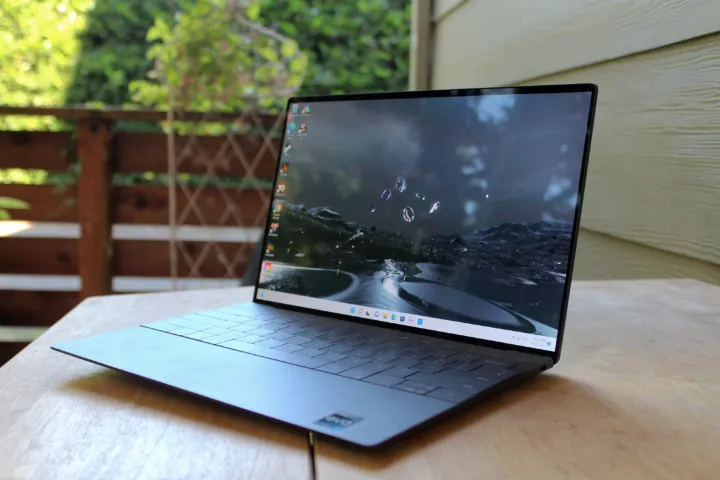
The XPS 13 Plus uses the same 13.4-inch 16:10 panel as used in previous versions of the XPS 13 — and it’s fantastic. Mine is the 3456 x 2160 resolution OLED panel, though you can opt for the 3840 x 2400 IPS display for the exact same price. The latter option isn’t OLED, but it’s a bit brighter and sharper. The OLED model tops out at 375 nits, which certainly isn’t the brightest panel in the world. But it’s plenty bright, even while working by a window or under harsh overhead lighting.
Even if you were to opt for the lower resolution base model, however, you’d be getting a solid screen. The model I reviewed has excellent color saturation (100% sRGB, 95% AdobeRGB) and color accuracy (Delta-E of 0.85). And, of course, because it’s OLED you get absolute blacks for contrast that standard LED panels just can’t compete with. That makes it a wonderful screen for watching TV shows or videos online.
And the bezels, of course, are as thin as ever, including up top where the webcam is. Even compared to the MacBook Air (which has a large notch), these bezels are just tiny — and it looks gorgeous.
A showstopper
It’s clear that Dell is onto something special with the XPS 13 Plus. More than any other laptop I’ve reviewed in the past couple of years, this is the one people want to stop me and see. While the standard XPS 13 will likely be the more popular option because of its price and more conventional keyboard and touchpad, the XPS 13 Plus feels less like a wild experiment and more like a gentle nudge to the rest of the industry in a new direction.
There are some alternatives to consider, however. The Dell XPS 13 9315 is a good alternative since it’s cheaper and has a more traditional keyboard and touchpad. It’s less powerful with 15-watt U-series CPUS, though, while providing much better battery life.
If you’re looking for a slightly larger, more powerful laptop, I’d recommend considering a 14-inch laptop such as the Asus Zenbook Pro 14 Duo, Lenovo Yoga 9i, Lenovo IdeaPad Slim Pro 7, and the Asus Zenbook 14 OLED. Lastly, the M2 MacBook Air continues to dominate the XPS 13 Plus in battery life and keeping surface temperatures cool.
But all in all, if you want a show-stopping, cutting-edge laptop, there’s still nothing quite like the XPS 13 Plus.
Editors’ Recommendations
